When we look around, we see both success and failure. I once noticed two fast-food restaurants side by side, selling the same food. Yet, one was full, and the other didn't have a single customer. It made me wonder: was this just luck, or the framework of vision, strategy, and execution that set them apart?
Now that my hair is turning white and wrinkles mark my face, my life experiences make me realize that these differences in outcomes often come down to the principles we choose to follow in life.
There is a framework for everything. A software development framework is a predefined structure of tools/libraries and guidelines that provides a foundation for building software applications. So, why shouldn't our lives also have a framework to guide us toward success?
“Vision without action is merely a dream. Action without vision just passes the time. Vision with action can change the world.” — Joel A. Barker
If you are with me in this guide, it means you are on a journey of growth, but seeking clarity, direction, and a framework that can turn your life into a proud story of purpose and success. So, let's turn your time here into fuel for success.
What I am going to present is a practical framework of life, i.e., a roadmap that connects life's journey and the key attributes of success, the five essential pillars, and the foundation blocks that hold it all together.
The Journey of Life & The Key Attributes of Success
Life is full of ups and downs. Sometimes, you find yourself climbing with confidence. At other times, you stumble upon obstacles that test your strength and patience.
Who isn't aware of Steve Jobs' story? When he was forced out of Apple, he could have become disappointed and given up. Instead, he used that setback to fuel his comeback, ultimately reshaping the company and the world of technology.
“I didn't see it then, but it turned out that getting fired from Apple was the best thing that could have ever happened to me. The heaviness of being successful was replaced by the lightness of being a beginner again, less sure about everything. It freed me to enter one of the most creative periods of my life.” – Steve Jobs.
The journey of life revolves around three key aspects: Past, Present, and Future. Each of them plays a role in how you drive your life.
Past: Lessons That Shape You
It is often said that you learn more from your mistakes and failures than from successes. With all the wins and losses buried in it, the Past is the best teacher you will ever have.
A lot of people use the negativity of the past rather than its learning aspects. For example, some athletes or entrepreneurs face early failure and let disappointment define them. They don't use the past to analyze what went wrong. Instead, they replay the failure in their minds, lose confidence, and stop trying. History is filled with businesses that collapsed not because of a single setback, but because their leaders were too focused on past mistakes to build for the future.
It won't be wrong to declare past the compass that directs your path forward. When you view the past correctly, it becomes less of a burden and more of a guiding tool that leads your future decisions.
Thomas Edison failed thousands of times before inventing the light bulb, yet he treated every failed attempt as a lesson that brought him closer to success.
J.K. Rowling faced multiple rejections before Harry Potter was published. Instead of giving up, she turned those failures into motivation and built a story that went on to inspire millions.
Elon Musk faced numerous early failures with SpaceX rockets, but he learned from his mistakes and redefined the field of space exploration.
In short, the past is about collecting experiences and learning from mistakes, failures, and successes. As a result, you can plan a future where you repeat 1% fewer errors and move 1% closer to success every day.
Present: Power of Now
The Present is all about showing contentment with what you have and staying energized to move toward what you want. It is the only time you actually control. It is the moment where decisions are made, actions are taken, and habits are built.
Too often, people either get stuck in the regrets of the past or get lost in the dreams of the future. They forget that progress only happens in the now.
“You cannot escape the responsibility of tomorrow by evading it today.” — Abraham Lincoln.
A notable example is that of athletes. When a player steps into the field, they cannot change yesterday's score or play tomorrow's match. Their entire focus is on the present moment because that is where victory is won.
Jeff Bezos emphasizes 'Every Day is Day One' at Amazon, as a reminder that staying present and innovative with a customer-focused approach is the only way to avoid complacency and keep growing.
In our day-to-day life, we should consider the present as our greatest asset. We not only have to be energetic about the future, but also intentional with the actions we take today. The actions we take today are the building blocks of tomorrow's success.
Future: The Influence You Create
The Future is what you can influence, as it gives the space where your vision, plans, and actions converge. You cannot change the past, while the present is about riding with the flow. In contrast, the future is an open canvas waiting for you to paint with your choices. The direction and quality of your journey depend on how you prepare for it today.
“The best way to predict your future is to create it.” — Peter Drucker
A student who aspires to become a doctor studies tirelessly today, and an entrepreneur who dreams of building a company takes small steps daily to bring that dream closer. The future rewards those who dare to dream big and then align their present actions to those dreams.
Attributes/Ingredients to Drive Your Future
Successful people understand that the future doesn't just happen by chance. It is shaped through planning, consistent effort, and a clear sense of purpose. However, the question is: what can we really influence to create the future we want?
There could be a long list of so-called attributes or ingredients to drive your future, but they all fall under these four core elements:
1. Vision
Vision is about what you want to achieve or the end goal of all your efforts. It is the destination that keeps you moving even when the road gets tough.
For example, you want to open your own café. Your vision is more than just about selling coffee. You want to create a space where people feel at home, connected, and inspired. They feel part of the community every time they walk through your doors.
2. Planning
Planning addresses the most critical question: how do I fulfill the vision? In this phase, you will develop the roadmap. Think of it as breaking a big dream into smaller and achievable steps. Without planning, even the most incredible vision will remain a wish.
To open a café, you must research locations, determine your budget, establish timelines, outline the resources, and plan all other necessary steps.
3. Strategy
Strategy answers the question of why behind your plan. Planning lays out the steps, but it's the strategy that gives meaning and direction to those steps.
For example, if you plan to open a café, your strategy might be to create a community space that brings people together or to offer healthier food choices.
Strategy keeps you anchored to your purpose so you don't just move forward but move forward with intention. In addition, it also emphasizes choosing the smartest path and adjusting your approach as challenges come.
4. Execution
Execution is your actual effort. It is the stage where vision, planning, and strategy come to life. It's about taking actions and making consistent progress with discipline toward your goal.
For example, you can open a café when you secure the location, hire staff, set up the kitchen, market your launch, and finally open the doors to customers. In short, execution is where dreams meet discipline, and ideas stop living on paper.
Wrapping Up the Story of Life
Life is not about regrets or fearing difficulties but about turning past lessons into tools for growth. The past guides, the present demands action, and the future rewards vision. When vision, planning, strategy, and execution align, they lead to true fulfillment.
The future isn't a chance. It's built on lessons from the past and the attributes that guide your actions now. Leave regret behind, act with purpose, and success will follow.
“Don’t watch the clock; do what it does. Keep going.” — Sam Levenson.
Five Essential Foundations for a Life of Success
Until now, we have investigated the journey of life from the aspects of past, present, and future, along with the attributes that shape the path ahead. But what if I tell you that these ingredients are ineffective without the core pillars that hold them together?
Just like a building cannot stand without strong columns, your life story cannot succeed without these five pillars:
1. Drive
You cannot achieve your dreams if there is no "Drive". Drive is what makes you wake up with purpose and push forward when things get tough. It keeps you motivated when results are not immediate. If there is drive, even limited means can lead to extraordinary outcomes.
For example, when opening a café, drive is what keeps you going through the struggles of the initial setup, such as finding the correct location, managing limited funds, hiring reliable staff, and facing delays in permits or supplies. Similarly, the early days may feel discouraging with slow customer flow. Still, it is the drive that pushes you to keep refining the experience until your café becomes the warm place you envisioned.
2. Discipline
Drive gives you the energy to start, but it's the Discipline that keeps you on track. It is the ability to stay consistent with your efforts, even when the excitement fades or distractions arise. Discipline is about sticking to your commitments and following through on the small daily actions that build long-term success.
For example, you have decided to open a café, but you are unaware of the legal formalities and other requirements. In such scenarios, you can succeed if you are disciplined. You can start with small steps and gradually set up systems one at a time.
Even when your café is running, you need discipline to wake up early to ensure everything is ready before opening hours, maintain quality in every cup of coffee, manage expenses carefully, and show up every day, even when sales are slow. Many people lose momentum after the initial enthusiasm, but discipline ensures you keep moving forward.
3. Hard Work
Jackpots are rare. Every successful person you see today has put in countless hours of effort behind the scenes. Hard work is the bridge between your vision and its reality. It is what turns late nights, early mornings, and countless trials into progress.
For example, if you are building your café, hard work means long days of testing recipes, arranging suppliers, training staff, and personally handling customers when needed. It may even require you to clean tables yourself when short-staffed or stay late to ensure tomorrow starts smoothly.
When drive gets you started and discipline keeps you steady, it's the hard work that can push your café from an idea into a successful business.
4. Constant Learning
Many people have a mindset that they know everything. This is known as the Dunning-Kruger effect, where people with little expertise often lack the awareness to recognize their own limitations.
When we examine life, it is a journey of constant learning. Would you feel happy if you were the same in your 20s as you are in your 30s, without any growth or development? Growth in life is about evolving, adapting, and continuously learning from every experience.
Our history is filled with successful people who learned from their mistakes and achieved great success. Howard Schultz took over Starbucks when the company struggled with its identity. Instead of giving up, he traveled, studied global café cultures, listened to customers, and refined the Starbucks experience. His willingness to learn and adapt transformed Starbucks into the worldwide coffee giant it is today.
For your café business, you may notice customers aren't ordering a particular item. So, you step up to listen to their feedback and experiment with new recipes that match their taste. This way, each mistake becomes a lesson, and every improvement brings you closer to success.
5. Organization
Last, but crucial, is being organized. Tell me who you think is better: a person who keeps everything scattered, misplaces documents, forgets deadlines, and reacts to problems, or someone who plans, keeps records in order, and follows a system?
Being organized is part of discipline, but what separates it is the structure it brings to your actions. For example, imagine you are running a café with great discipline. You consistently arrive on time every day, manage your staff effectively, and serve customers with care and attention. But if you fail to organize your supplies and forget to order enough coffee beans, you will disappoint customers when the shelves run empty.
“For every minute spent organizing, an hour is earned.” — Benjamin Franklin.
In short, the lack of organization undermines your disciplined efforts. An organized system enables you to handle daily challenges smoothly and frees your mind to focus on growth rather than chaos.
The Three Fundamental Building Blocks for Lasting Success
Think of your life as a grand building. While pillars offer support, it is the hidden foundation underneath that decides how long they will stand and how high they can reach. That foundation is built on three essential blocks:
1. Purpose
The purpose is your "why". It fuels your drive and makes your journey meaningful. Your efforts have no direction without a clear purpose. For example, your purpose might be to create a welcoming space for the community in your café. That purpose is what ignites your drive to start in the first place.
2. Mission
A mission is the actionable path that turns a purpose into reality. It aligns with discipline, hard work, and constant learning. It is because your mission is carried out step by step, through consistent effort, improving every day. In the café example, your mission could be to serve high-quality coffee with excellent customer service. It keeps you disciplined and willing to work hard, even during tough days.
3. Legacy
Legacy is what remains after you. It connects with the organization because only an organized system can outlast your direct involvement. In the café example, your legacy could be building a brand that continues to grow and serve people even after you are no longer there. It shows that you left a legacy where your efforts created something bigger than yourself.
Verdict: Together, Purpose, Mission, and Legacy strengthen the five pillars with a solid foundation. They give your drive direction, discipline, consistency, hard work, meaning, learning focus, and organizational longevity. However, if the foundation is soft, even the strongest pillars will eventually collapse, and the structure of success cannot withstand the test of time
Conclusion
The journey of life is shaped by how we learn from the past, act in the present, and prepare for the future. Vision, planning, strategy, and execution guide your path, while the five pillars stand firm on the foundation of Purpose, Mission, and Legacy. Therefore, I will wrap up this discussion by reminding you that success is never accidental; it's built step by step. Start today by defining your vision and committing to disciplined action to create a legacy worth leaving behind.


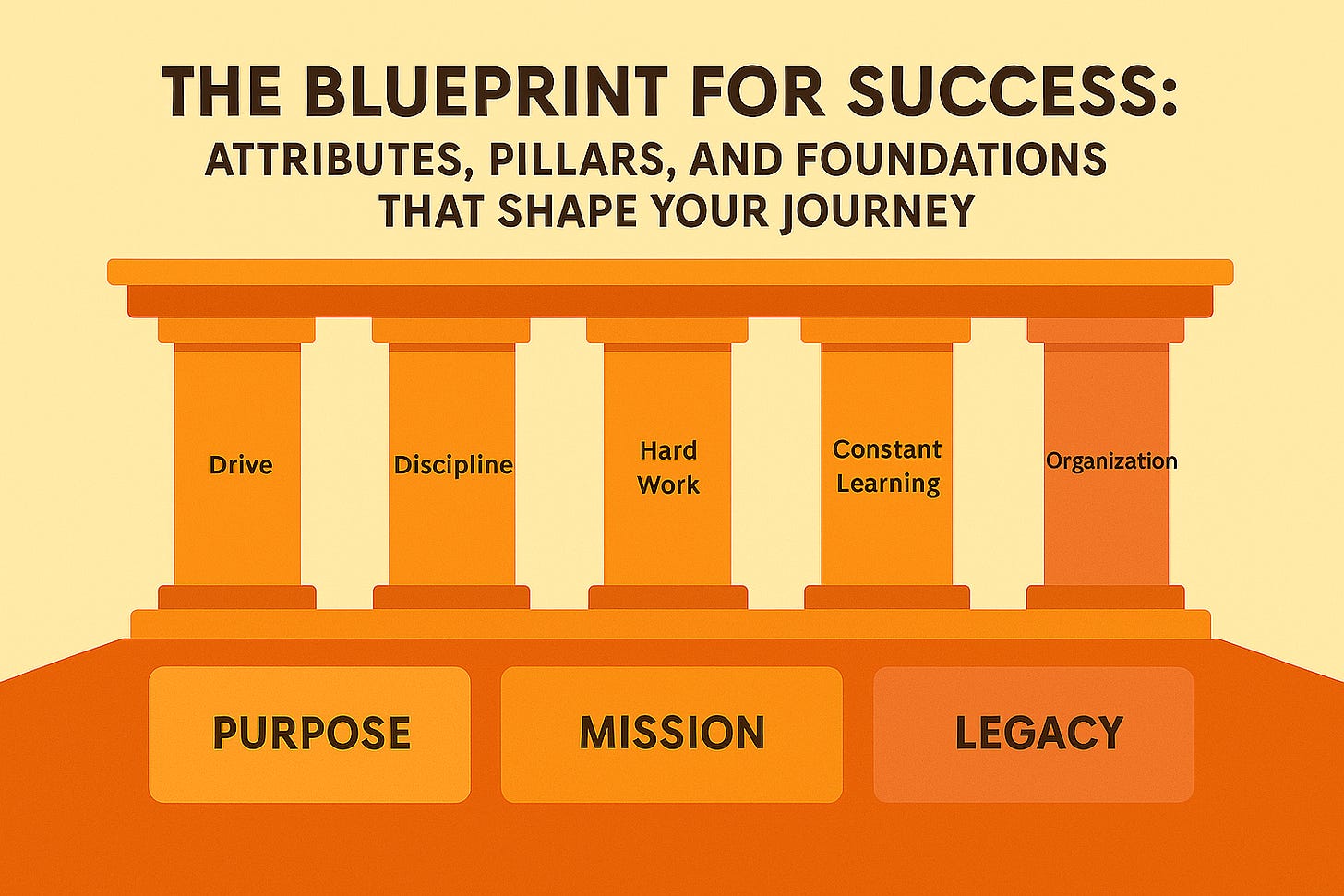
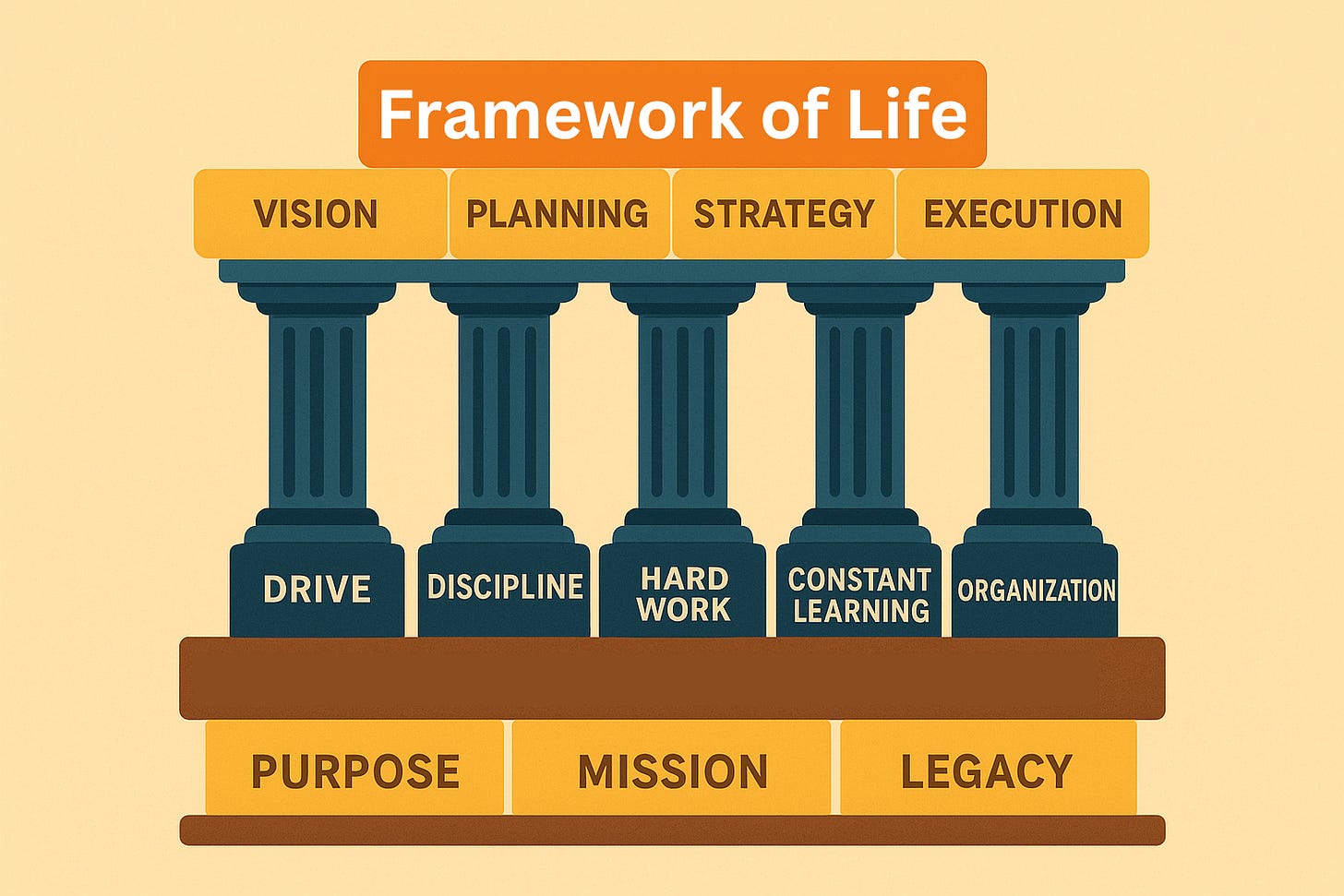
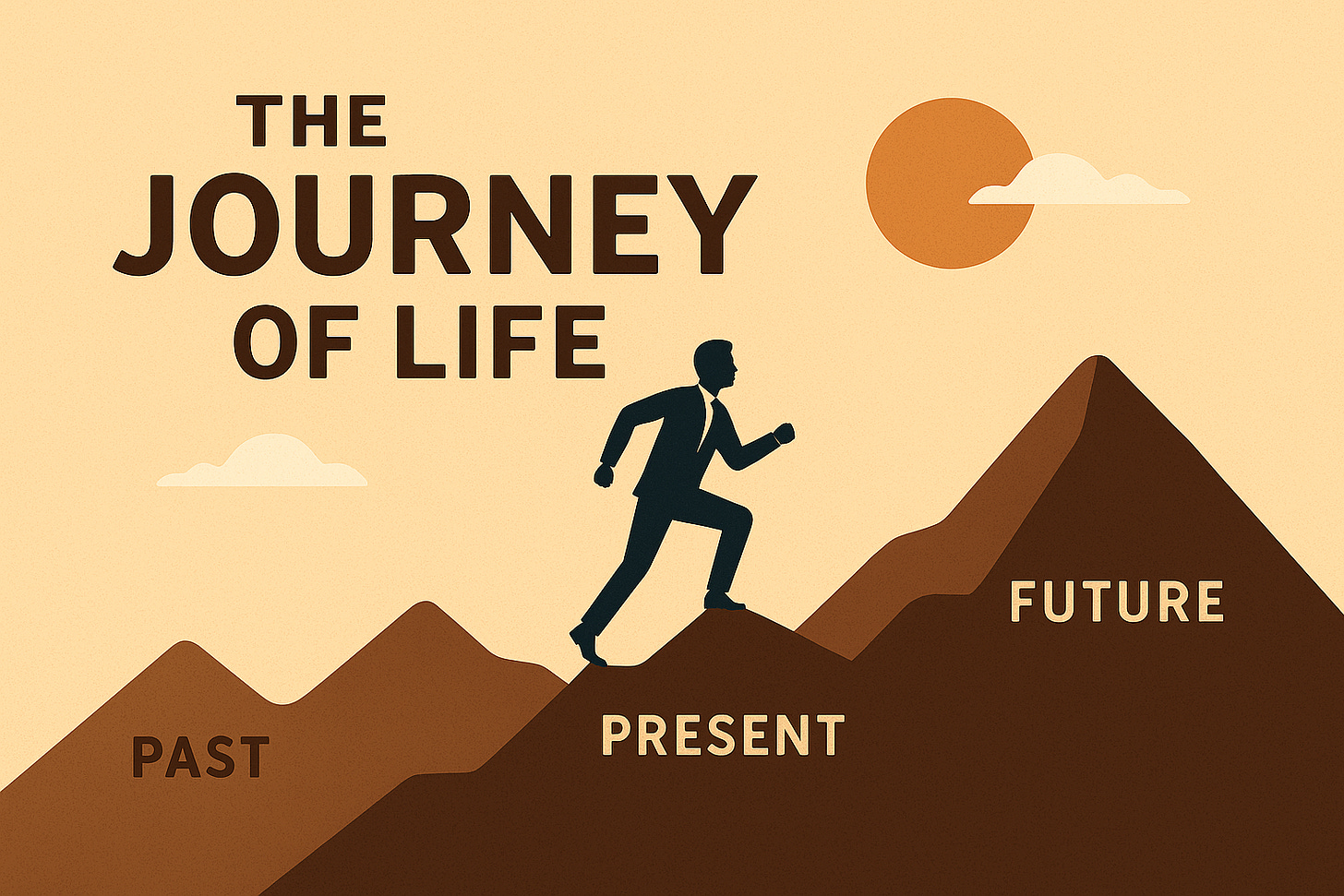
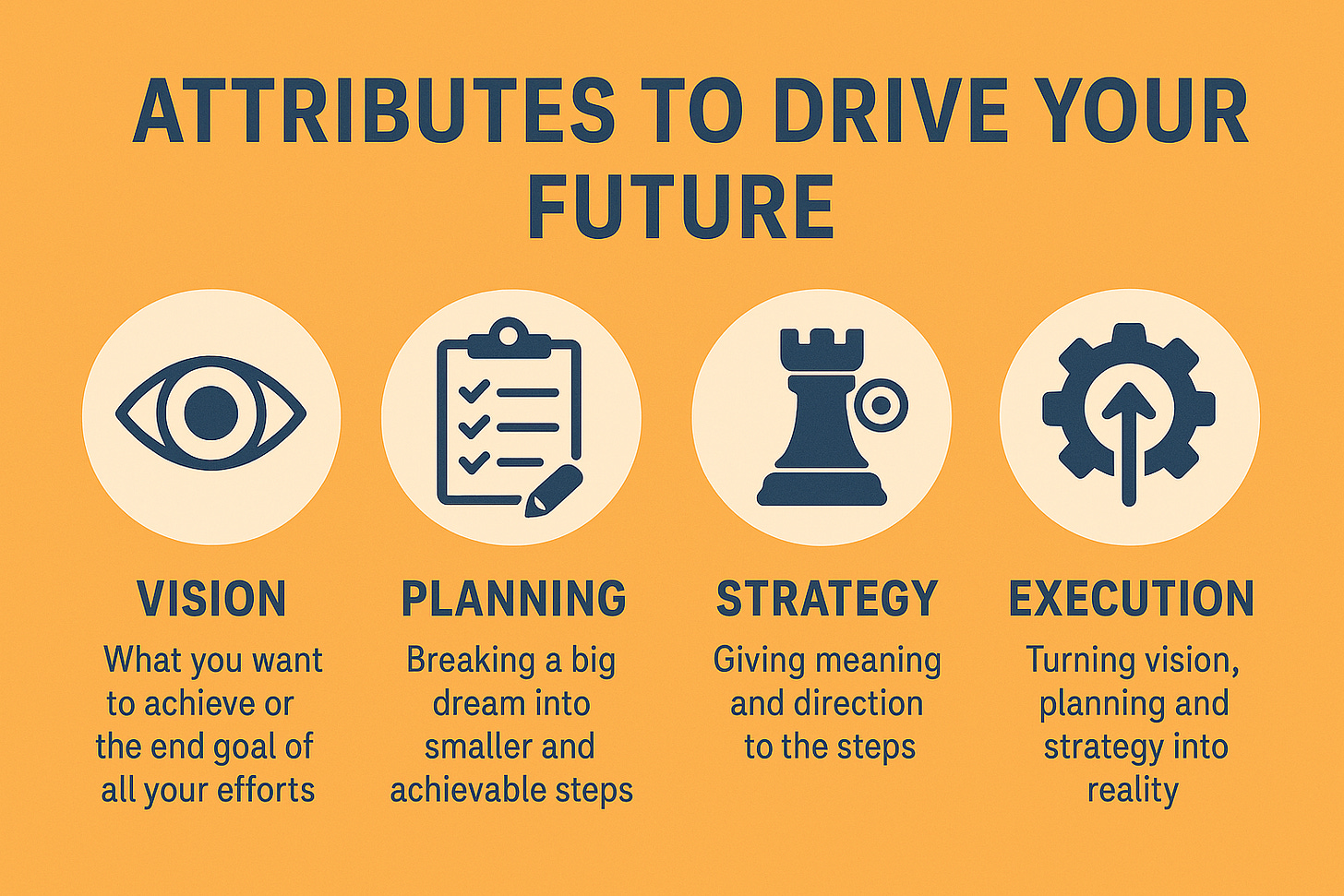
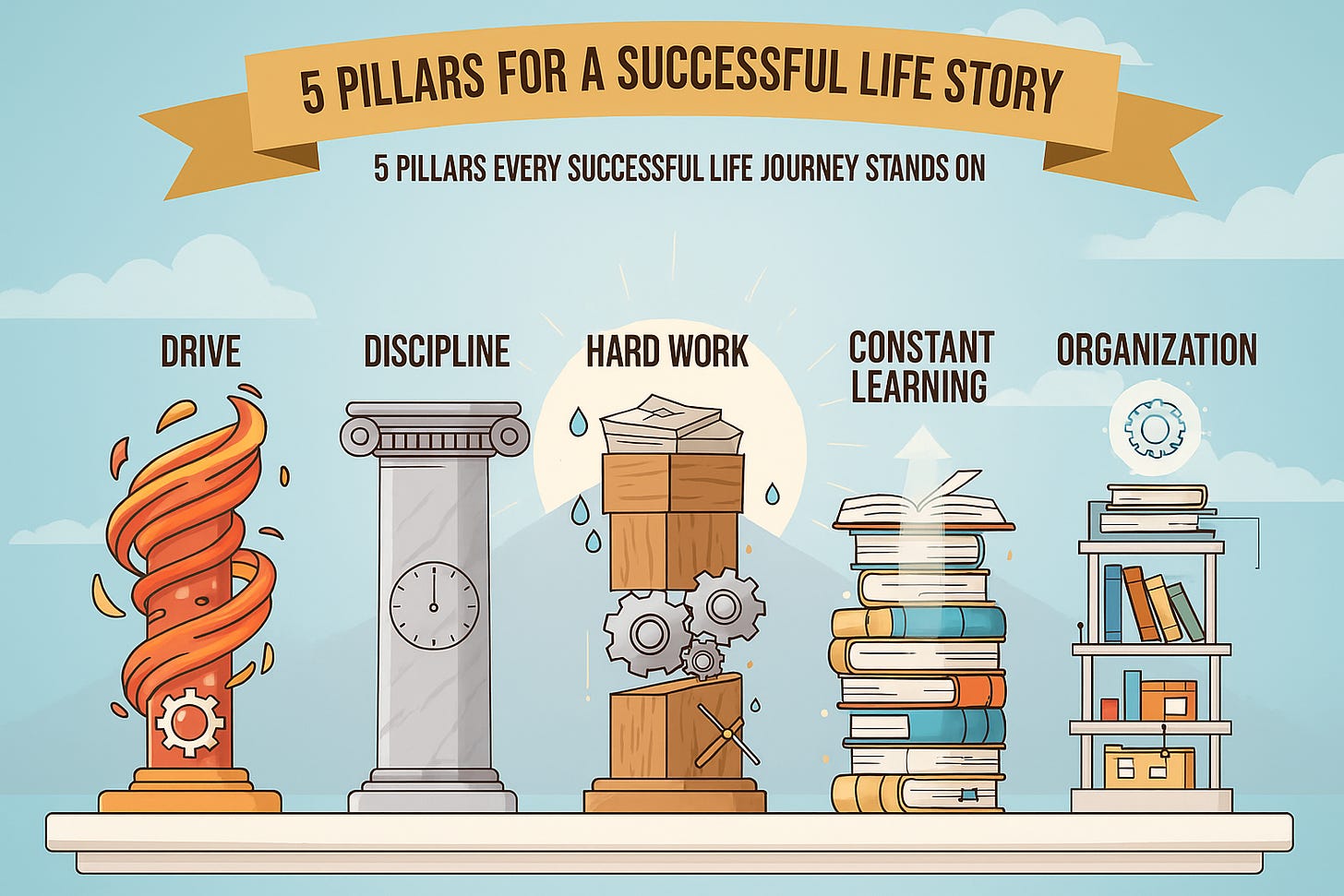
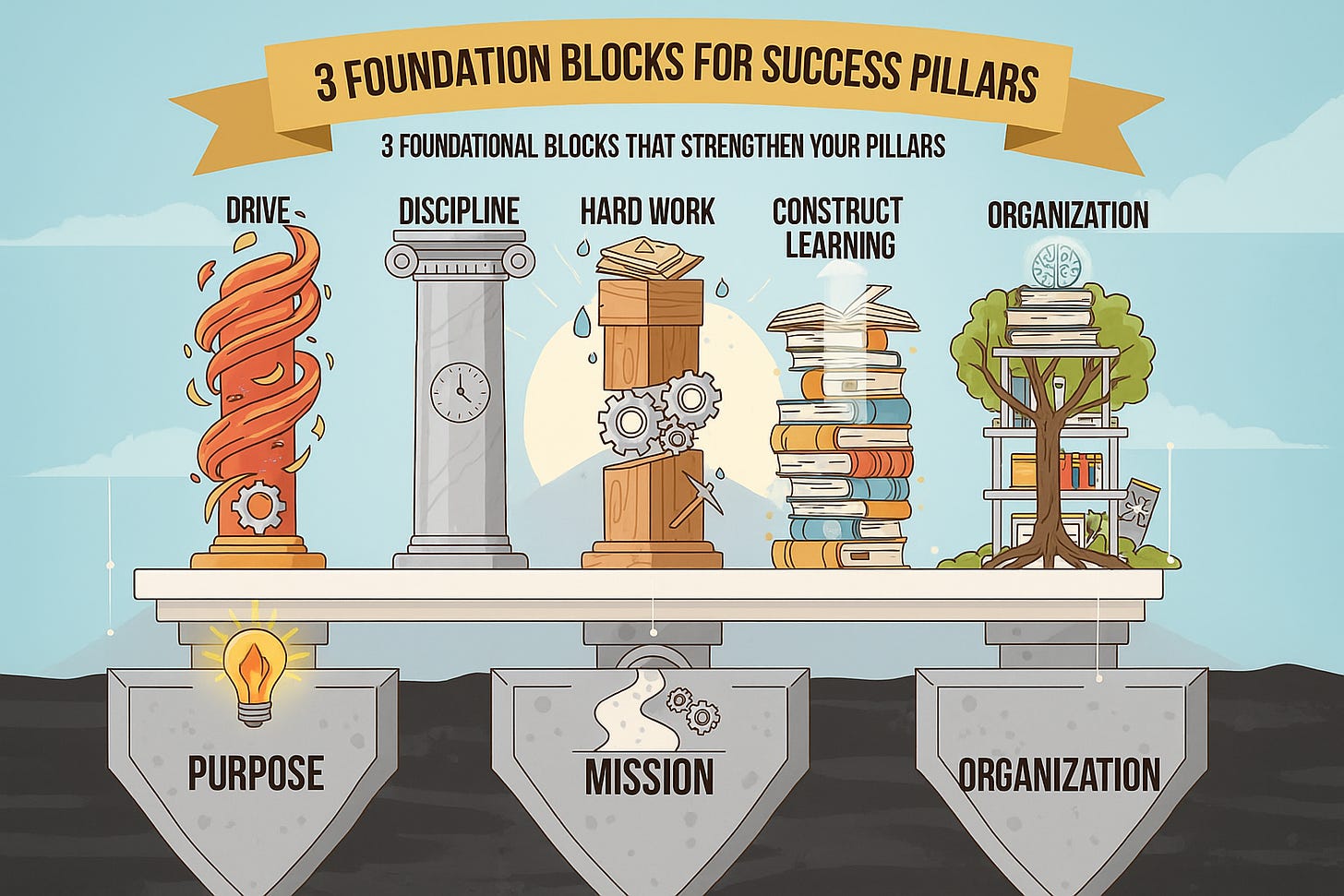
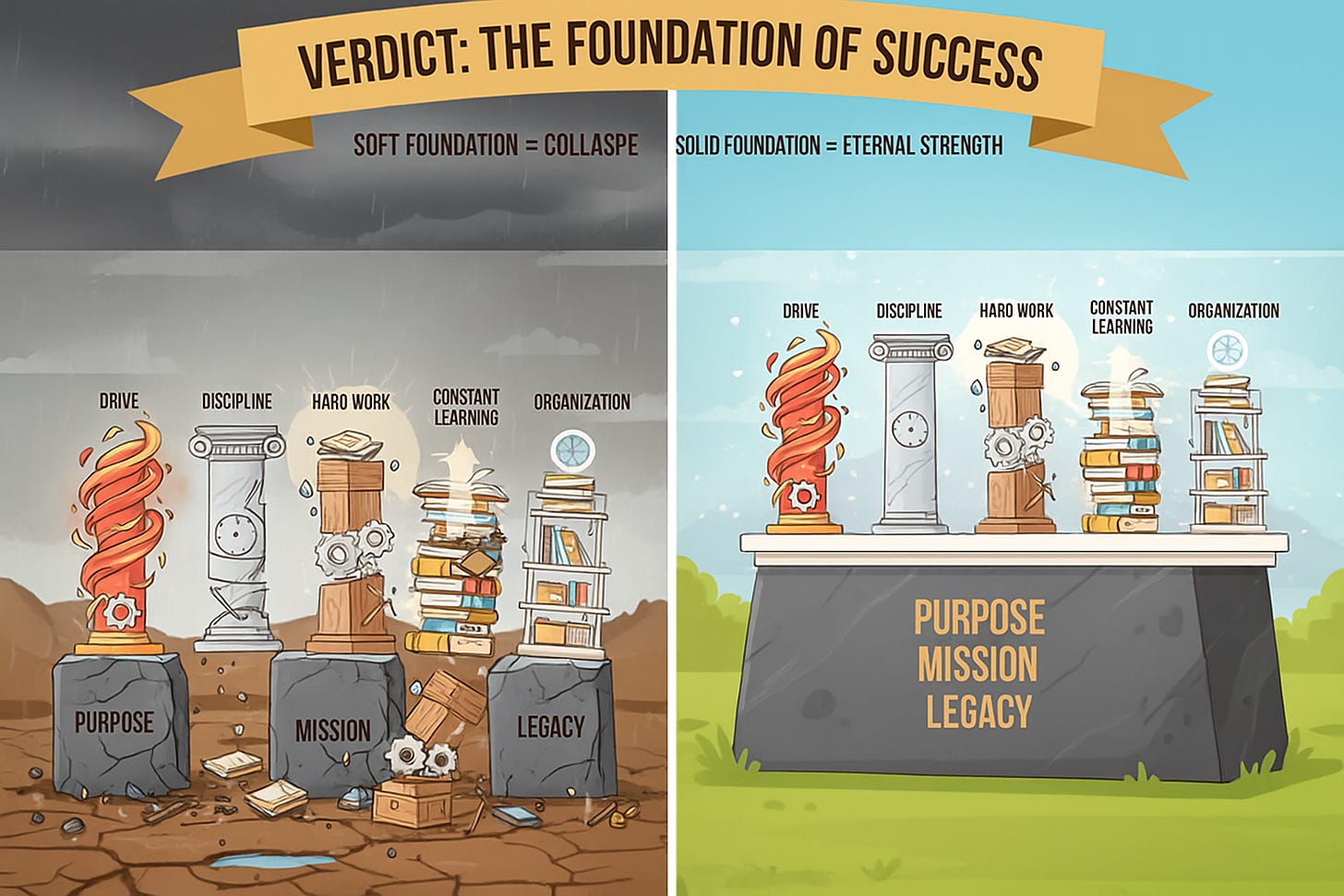
Great article!
Although some success could be attributed to luck and genealogy. The article rightly points out to vision , organization, constant learning and hard-work that would build everlasting legacy.